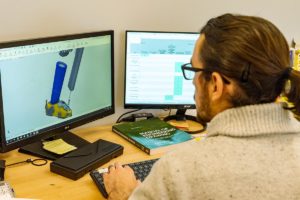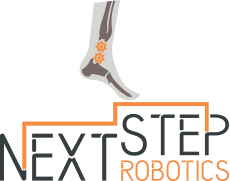 Foot drop, a condition that causes difficulty lifting the front part of the foot, affects millions of people every year. A large majority of foot drop patients are people who have had a stroke or those who are over the age of sixty-five. Patients who have foot drop cannot properly control the muscles of the foot, which may cause the toes to drag on the ground when walking.
Foot drop, a condition that causes difficulty lifting the front part of the foot, affects millions of people every year. A large majority of foot drop patients are people who have had a stroke or those who are over the age of sixty-five. Patients who have foot drop cannot properly control the muscles of the foot, which may cause the toes to drag on the ground when walking.
Until recently, the only hope for patients that suffer from foot drop was management with braces or intensive traditional treatment methods. Some of the conventional treatment methods for foot drop might include:
- Braces or splints – A brace on your ankle and foot, often referred to as an ankle foot orthotic or AFO, or splint that fits into your shoe can help hold your foot in a normal position.
- Physical therapy – Exercises that strengthen your leg muscles and help you maintain the range of motion in your knee and ankle might improve gait problems associated with foot drop. Stretching exercises and proper training can be particularly important to prevent stiffness in the heel.
- Nerve stimulation – Sometimes, stimulating the nerve that lifts the foot improves foot drop.
- Surgery – Depending upon the cause, and if your foot drop is relatively new, nerve surgery might help. If foot drop is long-standing, your doctor might suggest surgery that fuses ankle or foot bones or a procedure that transfers a working tendon and attached muscle to a different part of the foot.
These methods may or may not be effective for elderly patients. Our NextStep Robotics team decided that our purpose should be to determine a more effective solution for people who suffer from foot drop.
NextStep Robotics’ Purpose
NextStep Robotics has changed this way of thinking forever by creating an advanced solution to alleviate and eventually eliminate the symptoms of foot drop. When developing our proprietary device, our purpose has three dimensions: improve mobility for foot drop patients, prevent injuries that result from foot drop, and provide a cost-effective solution for foot drop.
Improved Mobility
Our NextStep Robotics team has used innovative technology in combination with physical therapy and training to enhance the quality of life for patients. Our device gives patients hope of improved mobility for those suffering from foot drop. This proprietary device is designed to not only treat the symptoms of foot drop but to also retrain the foot muscles and nervous system to move correctly. This improves mobility for foot drop patients, which leads to more independence and a better quality of life.
Injury Prevention
Further, NextStep Robotics plans to show its device is an effective training tool for fall prevention. The results of our preliminary testing indicate that this device acts as a mobility improvement device that can reduce a patient’s risk for falls. Other than the obvious benefit of improved safety for elderly patients, this effective prevention allows for less reliance on care providers and family members as well.
Cost Efficiency
This device not only benefits the safety of millions of stroke and elderly patients but also saves money that would be spent on rehabilitation or hospital stays that result from foot drop falls and injuries. This is more cost-effective for patients, as well as insurance companies. The cost-efficiency caused by NextStep Robotics’ solution has the potential to save millions of dollars every year.
Explore More About NextStep Robotics’ Purpose
NextStep Robotics’ device gives hope to patients with foot drop. The combination of our cutting-edge device with physical therapy is giving foot drop patients the opportunity for increased mobility, more independence, and a better quality of life. Our purpose is improved patient mobility through innovative technology. Contact NextStep Robotics today for more information about our purpose and technological advances by completing a convenient online form.

